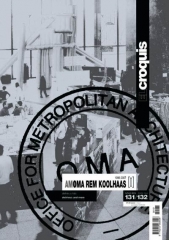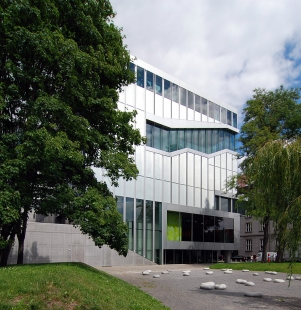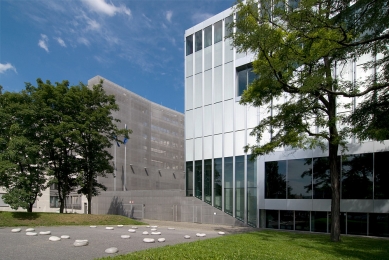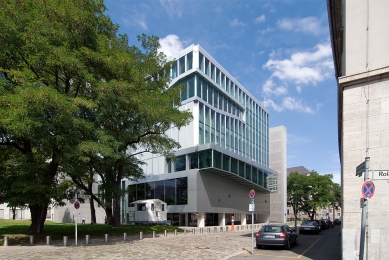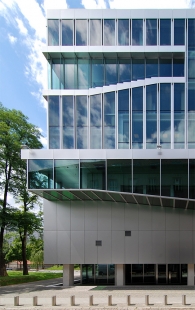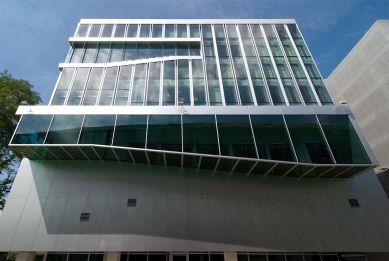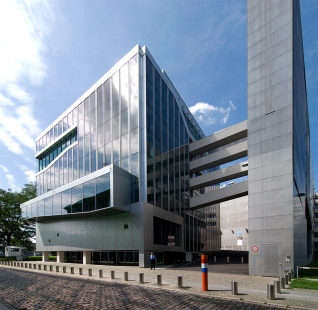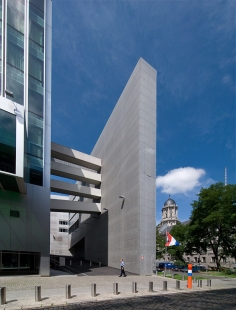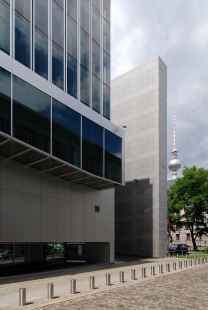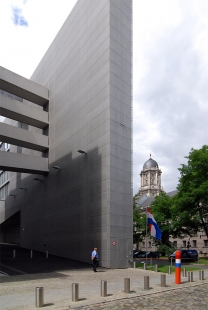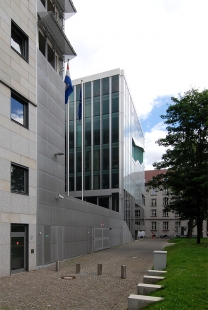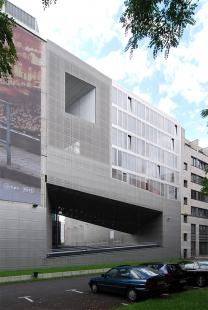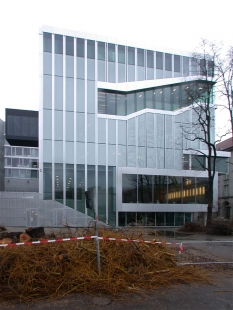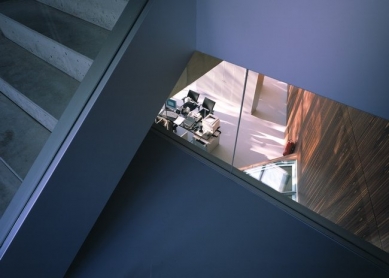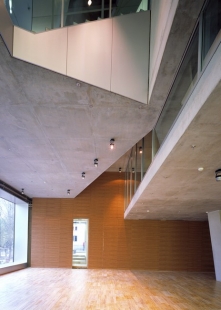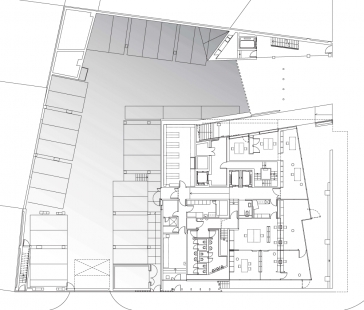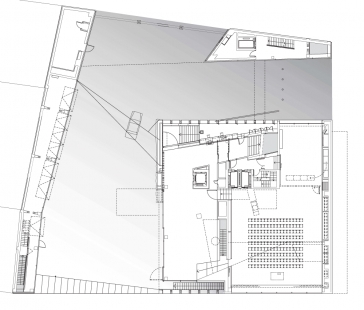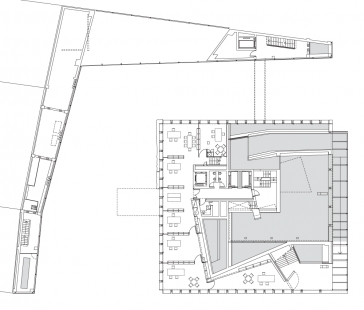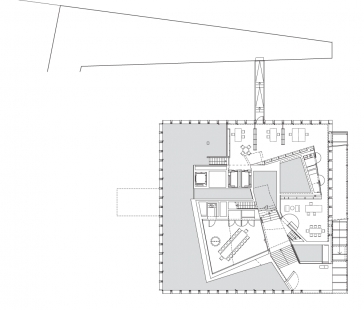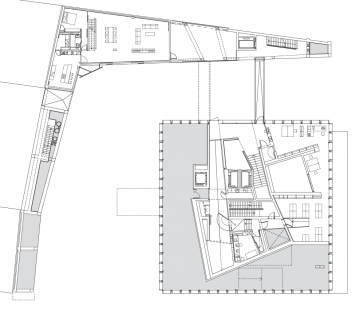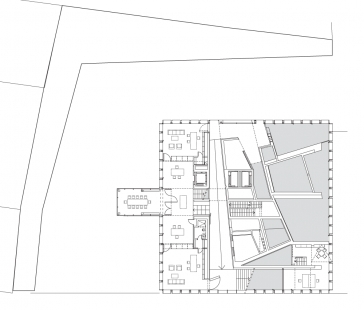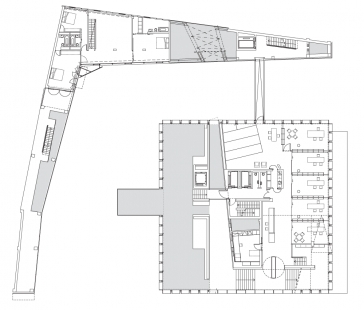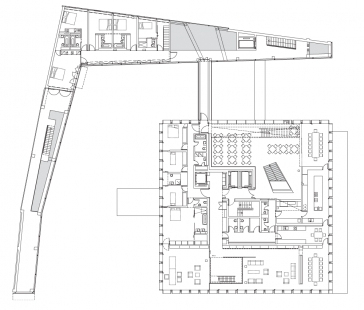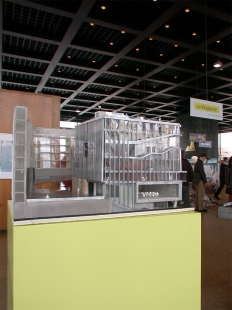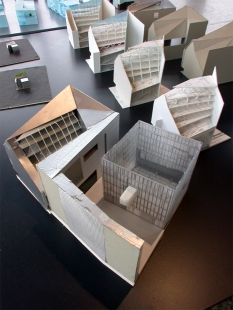
Dutch Embassy in Berlin

 |
The Netherlands, having sold their former embassy site after the War, was free to choose anew and preferred Roland Ufer in Mitte, the oldest Berlin settlement, next to the (new) government district of their main trade partner. The client demanded a solitary building, integrating requirements of conventional civil service security with Dutch openness.
Traditional (former West Berlin) city planning guidelines demanded the new building to complete the city block in 19th century fashion, the (former East Berlin) city planning officials had an open mind towards our proposal for a freestanding cube on a - block completing - podium.
When we were given charge of the design of the entire site we were able to further explore a combination of obedience (fulfilling the block’s perimeter) and disobedience (building a solitary cube).
A continuous trajectory reaching all eight stories of the embassy shapes the building’s internal communication.
The workspaces are the ‘leftover areas’ after the trajectory was ‘carved’ out of the cube and are situated along the facade.
Reception spaces are activated inside the cube. Other semi-public spaces are located closer to the facade and at one point cantilever out over the drop-off area. From the entry, the trajectory leads on via the library, meeting rooms, fitness area and restaurant to the roof terrace.
The trajectory exploits the relationship with the context, river Spree, Television Tower (‘Fernsehturm’), park and wall of embassy residences; part of it is a ‘diagonal void’ through the building that allows one to see the TV ower from the park.
The (slightly over pressurized) trajectory works as a main airduct from which fresh air percolates to the offices to be drawn off via the double (plenum) facade. This ventilation concept is part of a strategy to integrate more functions into one element.
This integration strategy is also used with the structural concept. The internal walls adjacent to the trajectory are load bearing beams that cross over each other enough to bring loads down. Hereby big open spaces are created on the lower floors of the building. Load baring – glass – mullions, allowed to fall out in case of a fire while still leaving the superstructure in tact, support the floor slabs where the trajectory meets the facade.
The access road between ‘cube’ and ‘residential wall’ acts as courtyard open to one side to allow a panoramic view over the Spree and the park. In order to emphasize the difference with the surrounding buildings which are clad with stone, the sockle and the wall with the residences are clad with aluminium.
OMA
0 comments
add comment




